Boating is the only activity in which you get to be a carpenter, a mechanic, a painter, a seamstress, an electrician and a plumber. But even the pros know that keeping it simple is often the best way to address a problem and get on with enjoying the boat. So rather than spend time running to the marine supply store, we’ll use lip balm to lubricate canvas snaps. We’ll use a turkey baster to suck the debris from a sea strainer rather than disassemble the whole thing. We douse cables with baby powder when installing new equipment, knowing that they’ll pull more easily through tubes and pipes. We’ve gleaned a boatload of cheap, fast and easy boatyard tips so you can better enjoy your time on the water.
1. Sandbag Anchor
A small, rugged bag filled with sand makes a great dinghy anchor, as it stows easily and won’t mar the finish of a hard dink nor puncture an inflatable. Try a bank-style coin bag available at an office supply store, or a small nylon bag such as those used by backpackers and campers to keep gear dry. In fact, a backpack filled with sand makes a dandy emergency anchor, should you find yourself hookless.
2. Gack Buster
Want a cheap home remedy for washing away scum lines and rust stains? you can buy oxalic acid, the primary ingredient in most hull cleaners, in powder form at hardware stores for about half the price of the prepackaged potion. Mix with water, don gloves and safety glasses and, with the boat out of the water, apply with a cheap brush. rinse and watch the shine come back.
3. Beat the Cold
In colder climates, use a hair dryer or a heat gun set to low to warm and expand cold canvas. after doing so, you’ll be able to make every snap without using herculean strength. While you’re at it, use the hair dryer to lift the dew from your windshield.
4. Grease Wheezer
Petroleum jelly is cheap, readily available and has loads of uses aboard. use it as lip balm or to coat battery terminals. apply to screws and bolts to lessen the chances of cross-threading, galling and splitting. a thin film buffed out with a rag makes deck hardware gleam.
5. Deck-tal Hygiene
Toothpaste will remove surface rust from stainless-steel fittings. use a toothbrush to apply, then buff with a rag for a brilliant shine.
6. Citrus Fix
Out of Crest? Rub lemon juice or lime juice on stainless steel, then buff it with a rag for a deep shine. I’ve found that it also leaves a protective coating.
7. Knife Life
Coat filet knives with cooking oil after each use, dispensed from a recycled spray bottle. The oil prevents rust from forming on the blade, and it won’t contaminate your dinner.
8. Vise Squad
Ever need to tighten a nut on one side of a bulkhead, but your arms aren’t long enough to reach around the other side and hold a wrench on the bolt head? Locking pliers serve as a second set of hands when working solo. Tighten the nut by hand, and then clamp on the pliers. Go to the other side and turn the wrench or screwdriver: Most times (we are talking about boats, right?) there’s an obstruction on the side where you clamped the pliers, and as you turn the bolt, the pliers will rotate until they fetch-up on the cable, corner or underside of the deck, allowing you to sock the fastener tight.
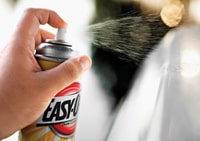
9. Name Game
Need to remove a painted name, registration numbers or some — oops! — splattered antifouling that you let dry on your topsides? Spray-on oven cleaner works great.
10. Glare Bear
If your light-colored helm reflects in your windshield and obscures your vision on bright days, lay a dark towel or T-shirt over the top of the dash. The glare will disappear.
11. Resid-eeeeew
To remove adhesive residue when replacing striping, a boat name or registration numbers, spray the glue line with a water-displacing lubricant, such as CrC. The sticky stuff should come off much easier.
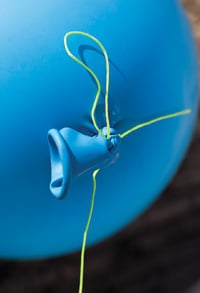
12. It is Bah-looon!
For a fishing float that will both suspend a large bait, like a 2-pound filet, and then release instantly when a fish strikes, try this: a) Drop your bait to the desired depth. B) Inflate a balloon and tie it. C) Grab a loop of your fishing line about two feet long. D) Tie the balloon around both strands of the loop with a simple overhand knot. When a fish strikes, the loop pulls through the balloon knot, allowing you to battle the leviathan unhindered.
13. Oil Shtick
Use Super Glue to apply a strip of sandpaper to the inside band of your filter wrench’s strap to get a better grip on slippery filter elements.
14. Hub Dub
Your tow vehicle’s lug wrench won’t fit the nut that secures your trailer’s hubs to its axles. Carry a pair of slip-joint pliers so you can perform bearing repairs in the field and get headed back to the lake. (you do carry spare bearings and seals, right?) They work well for the cotter pin too.
15. Everclear
Wire your gauge lights directly to the “on” position of the ignition switch and they’ll never fog — the heat from the light keeps them clear.
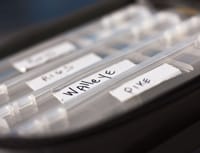
16. Junk Drawer No More
Label clear plastic tackle trays using removable tape — sometimes called “long mask” — across the side of the tray that’s visible when you open your tackle locker, box or bag. Mark the tape to indicate species, season or tackle type. Putting things back in their right place is still up to you.
17. Chilly Willy
Place a space blanket, silver side up, atop the ice and store it in your cooler. It will keep ice and goods chilled longer. This tip works just as well for anglers needing to keep their fish boxes cold. Space blankets are cheap and available at camping stores.
18. Hang Out
A wire coat hanger can save the day. Bend it into a hook and you can retrieve that wedding ring that fell between the outboard stringer and the hull side — under the air-conditioner and beside the engine, of course. Cut a small section and bend it into a cotter pin. If a hose is clogged, as when wasps build a nest in your tank vent fitting, it’s just the thing.
19. Sonic Shoo!
A great way to keep mice, raccoons, squirrels and other critters from making a home aboard your boat while it’s in storage is to tune a portable radio to a 24-hour all-talk station and leave it anywhere it can be heard on the boat. It makes the would-be homesteaders think you’re aboard. Check the batteries about every six weeks.
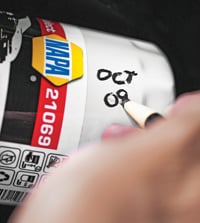
20. Forget-Me-Not
Use a grease pencil to mark the date on the element when you change a filter so you’ll know at a glance how old it is. Mark batteries the same way, and consider giving them the heave-ho after five years.
21. Fresh Water
Allow the dock hose to run for a minute before filling your potable water tank so that you don’t end up brushing your teeth or making tea with stale water that’s been sitting in the hose and plumbing.
22. Height is Right
Always use a torque wrench when installing spark plugs. The torque setting not only indicates tightness but, just as important, also sets the height of the electrode at the ideal height above top dead center for the most efficient combustion.
23. Panty Hose Suck
Stretch panty hose over a shop-vac nozzle to retrieve items dropped in blind areas of the bilge.
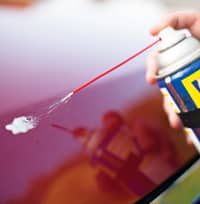
24. Bug Off
Want to keep your boat and tow vehicle bug-free? WD-40 softens splattered moths, squashed flies and smashed love bugs so they’re easier to wipe off. It won’t harm gelcoat or paint either. Bonus: Spray a light coat on your windshield and the front of your hood before driving into the evening swarms, buff till clear, and it’ll make bugs easier to clean off after they make contact with your vehicle. It will also help bead rainwater, like dedicated windshield products, providing better visibility during downpours.
25. Avoid the Lid Fit
As soon as you open a can of paint, punch six or eight holes around the can’s perimeter, in the little groove the lid recesses into. Doing so allows paint scraped off a brush or stirrer to drain back into the can instead of clogging up the lid. A 10-penny nail driven by a light hammer works great.
26. Half Again
To minimize evaporation of solvent when you use only a partial can of paint, blow up a balloon and put it in the can before putting the lid on. The balloon displaces air, ensuring more of the paint is usable next time the can is opened.
27. Scotch Salad
Vinegar and warm water applied with a coarse scrubbing pad (Scotch Brite: red is coarse) will remove fouling from shafts, struts and props — it will polish them as well.
28. Smooth as a Baby’s …
Use a sanding block loaded with drywall sanding mesh, available at building supply stores, to smooth out craters and remove loose flakes from bottom paint.
29. Bungee-be-Gone
Empty milk jugs filled with water and tied to the grommets by lengths of cord will hold your winter tarp or cover in place, even when the cold gusts blow. Using these will still allow you to easily access the boat from time to time during storage. In colder climates, substitute sand for water to prevent cracking the jugs.
30. Stable Liner
Add fuel stabilizer to your tank at the storage dosage before you haul your boat — preferably before your last outing. Doing so ensures your fuel lines won’t collect gum and varnish during storage.
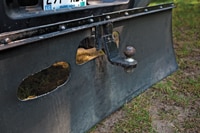
31. Chip No More
Want to really protect your trailered boat from road rash? Cut a length of angle iron to the width of your tow vehicle. Screw or rivet a swath of stiff rubber — a big doormat or section of rug works — across it. Cut a hole for your receiver and hitch in the rubber, then bolt it to the top of your receiver. Use a carriage bolt inserted from inside the receiver to ensure clearance for your hitch.









